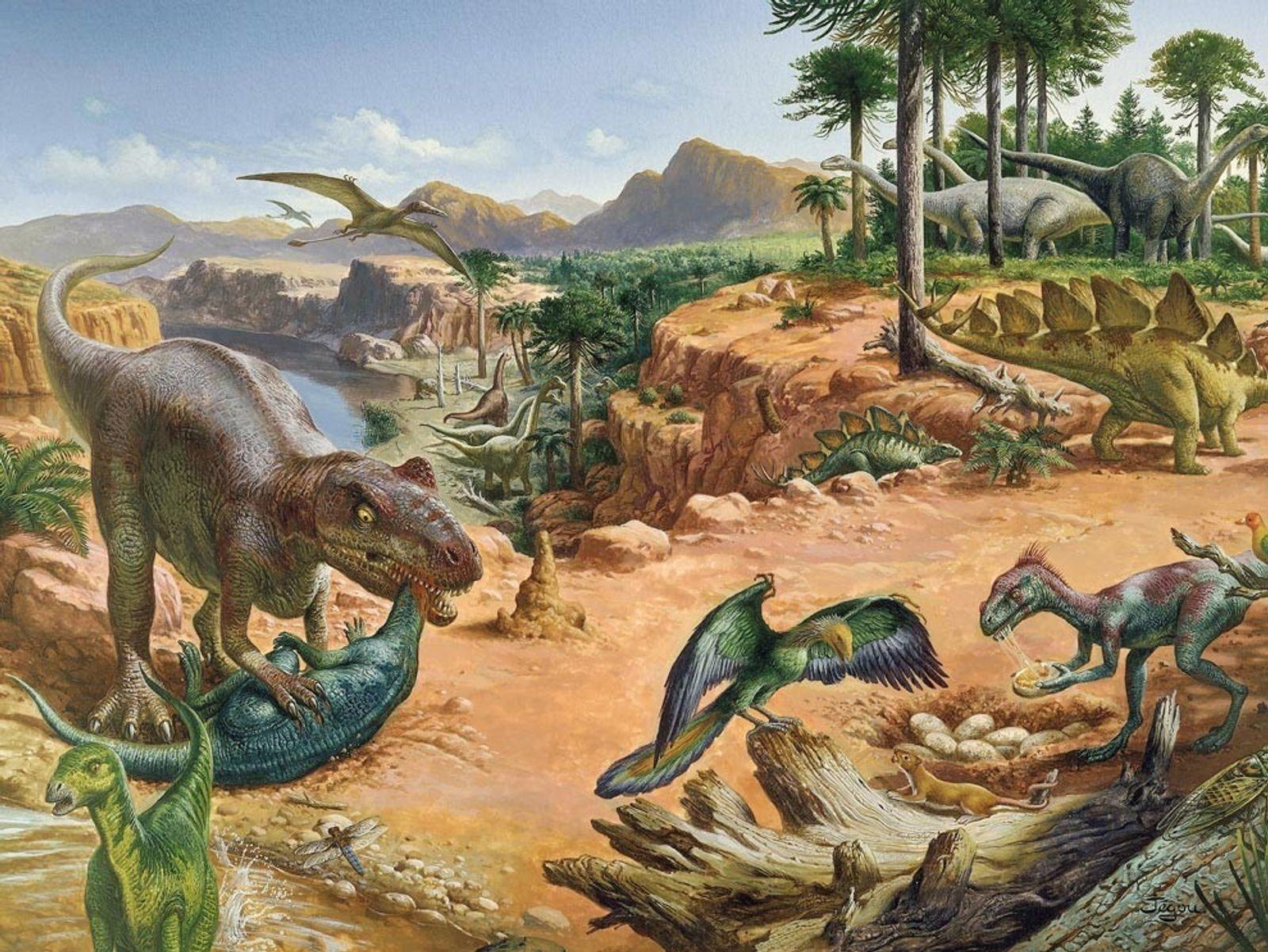
Jurassic Period
#history
201-145 million years BC
- At the end of the Triassic period there was a massive disappearance of species, but this did not affect dinosaurs. Although the causes are the subject of great debate in the scientific community, it is known that dinosaurs survived.
Due to the proliferation of vegetation areas during this period, dinosaurs were able to evolve and increase in population.
Pangaea was divided in two, creating Laurasia in the north and Gondwana in the south. Despite this separation, similarities in dinosaur fossil records show that there were some terrestrial connections between the two continents in the early Jurassic.
The climate changed as temperatures dropped slightly. The lower temperatures were accompanied by great rainfall, which increased due to the large seas that appeared among the land masses.
These climatic changes caused the proliferation of plants such as ferns, which became the current sources of fossil fuels.
The most important dinosaurs of the Jurassic Period were the Apatosaurus, the Diplodocus and the Brachiosaurus. These are some of the largest animals that have traveled the face of the Earth.
- Comments (0)
- Recommended
- Milestones
Here are your recommended items...
Here are your milestones...








